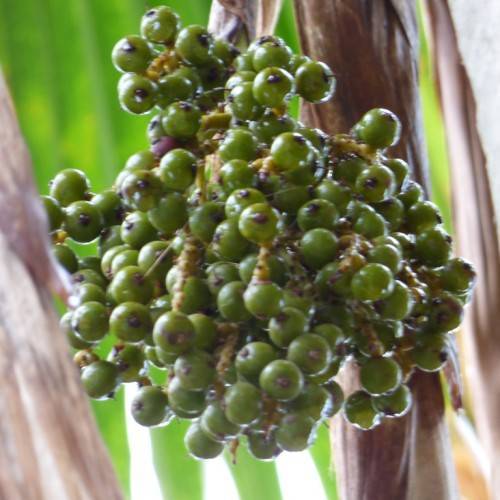
Fiji palm
Pritchardia pacifica
Cycle:
Perennial
Watering:
Minimum
Hardiness Zone:
10 - 11
Flowers:
Flowers
Sun:
full sun,part shade
Fruits:
Fruits Ready In
Edible:
Yes
Leaf:
Yes
Growth Rate:
Low
Maintenance:
Low
Drought Tolerant:
Yes
Salt Tolerant:
Yes
Tropical:
Yes
Care Level:
High
watering
Fiji palm should be watered deeply and infrequently, generally about once every 2 weeks with a thorough soaking. The soil should be allowed to dry slightly between waterings for ideal results. During warmer months, take care to water more often, as the plant may require it every 7-10 days depending on temperature and humidity levels.
sunlight
Fiji palms need several hours of direct sunlight each day and prefer partial shade in the late afternoon. They will thrive in bright, indirect light when grown indoors. For outdoor plants in tropical climates, plant them in an area that receives several hours of full sun each day. In cooler climates, they should be placed in an area with partial to full shade during the hottest part of the day. Ensure that your plants receive at least 6 hours of sunlight each day for best growth and health.
pruning
Fiji palm should be pruned every 1 to 2 years to promote healthy growth. Pruning can be done in late spring or early summer, when new growth begins to appear. Use shears or a pruning saw to remove dead and effected leaves and branches. You can also remove weaker stems and unwanted suckers from near the base of the stem to encourage healthier growth. When pruning your Fiji palm, be sure to disinfect your pruning tools between uses. This will help prevent the spread of disease and pests.
